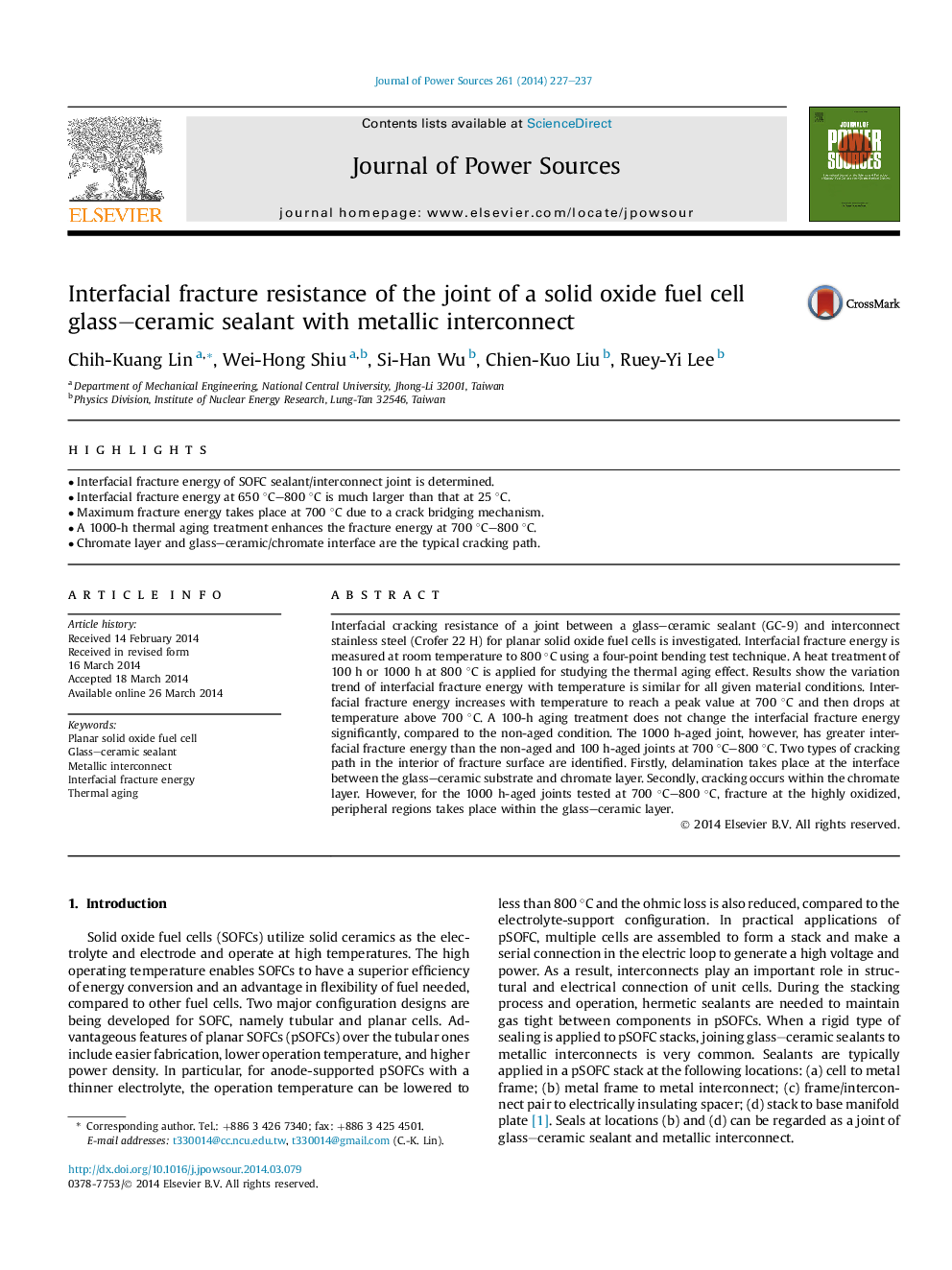| Article ID | Journal | Published Year | Pages | File Type |
|---|---|---|---|---|
| 7736481 | Journal of Power Sources | 2014 | 11 Pages |
Abstract
Interfacial cracking resistance of a joint between a glass-ceramic sealant (GC-9) and interconnect stainless steel (Crofer 22 H) for planar solid oxide fuel cells is investigated. Interfacial fracture energy is measured at room temperature to 800 °C using a four-point bending test technique. A heat treatment of 100 h or 1000 h at 800 °C is applied for studying the thermal aging effect. Results show the variation trend of interfacial fracture energy with temperature is similar for all given material conditions. Interfacial fracture energy increases with temperature to reach a peak value at 700 °C and then drops at temperature above 700 °C. A 100-h aging treatment does not change the interfacial fracture energy significantly, compared to the non-aged condition. The 1000 h-aged joint, however, has greater interfacial fracture energy than the non-aged and 100 h-aged joints at 700 °C-800 °C. Two types of cracking path in the interior of fracture surface are identified. Firstly, delamination takes place at the interface between the glass-ceramic substrate and chromate layer. Secondly, cracking occurs within the chromate layer. However, for the 1000 h-aged joints tested at 700 °C-800 °C, fracture at the highly oxidized, peripheral regions takes place within the glass-ceramic layer.
Related Topics
Physical Sciences and Engineering
Chemistry
Electrochemistry
Authors
Chih-Kuang Lin, Wei-Hong Shiu, Si-Han Wu, Chien-Kuo Liu, Ruey-Yi Lee,
